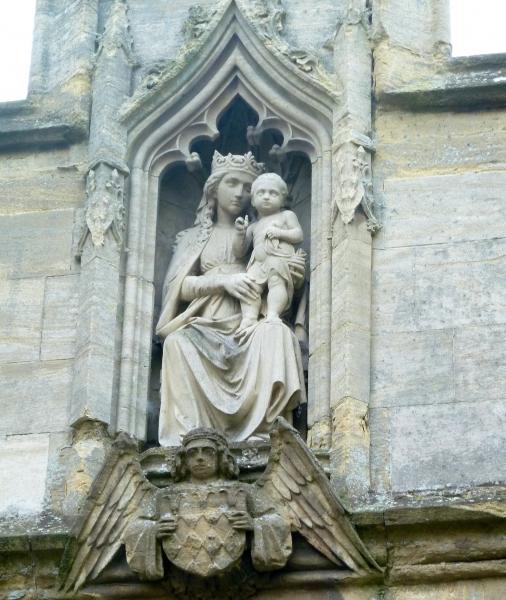



On a peerless day in November we walked coatless alongside the River Till, near the estates of Ford and Etal and close by Flodden where James IV’s Scottish army was defeated in a decisive battle. The sun was warm, almost hot, and we watched the play of light on the water and through the gold and russet foliage. A few people went by with dogs and a cheery hello.
My discovery of these northernmost parts has restored and refreshed my jaded vision of an urban dreariness full of ugly new build, strewn with litter and fractured by motorways (with their attendant filthy “comfort stops”) many undergoing what looks like years more of repair work. On my 7 hour journey I wondered how the Northern Powerhouse was supposed to work when arterial roads had seemingly ground to a halt. Then, 90 minutes after leaving the Angel of the North, came the rolling fields and castles of Northumberland, the county with the most castles in Britain.
Rowena and I returned to stay at Newt Cottage, in Huntinghall which is a thoroughbred ecologically sound farm about 4 miles from the Holy Island of Lindisfarne. St Aidan arrived there from Iona in 635 AD to set up the monastery and after him St Cuthbert who followed as Abbot. Raided by the Vikings and the Danes, the monastery destroyed by bad King Henry, the tiny island has a distanced and calming beauty and the passage over the causeway at low tide takes one into another dimension of time and space. In 1911 Edwin Lutyens finished the wonderful castle that perches on the Eastern end of the island. His favourite gardener Gertrude Jekyll designed the compact garden with its blown roses and herb beds that have to weather the sea storms.



As the sun set we retreated back to the farm and Newt Cottage to light a fire, cook supper (Karen Burn the farmer’s wife started us off with a basket of her own bread, sausages from the farm, apple cake, delicious cider, honey and eggs). From the kitchen window we could see the neat farmyard and piggery, full of various old breeds of little pinky babies.



The Borders are full of interesting towns like Wooler, Melrose, Kelso, Berwick-upon-Tweed and a little gem called St Boswells which has the one of the most delightful bookshops and cafe I’ve been to. Owned by a ex-Bloomsbury Press editor Ros de le Hey and Bill her Somerset born husband, Mainstreet Bookshop is a treasure trove of delectable books and food.

They have author talks and events and the space is beautifully curated. “A bookshop so perfect you might have dreamed it” says Maggie O’Farrell. The drive to St Boswell’s is also dreamlike in the golden Autumn afternoon, the road following the mighty Tweed in its journey west to east.
Last year we saw seals sniffing the air on the rocks off Berwick-upon-Tweed and we followed the Lowry trail in this ancient town with its magnificent Elizabethan fortifications and spectacular railway bridge.
The lighthouse, the board said had been painted by one Ian Grieve who used up 200 litres of paint. 
Then we saw Ian’s van in town. “From country houses to lighthouses.”
Next year we’ll walk along Hadrian’s Wall. There has to be a next year.
“Northumberland is like the England of my childhood” said a woman who runs an antique shop in Wooler, another small town which boasts two family butchers. The one who cures the bacon from Tom Burns’ pigs is a wag and the grocer has one of the best stocked shelves I’ve seen in a long time. Yes, we’ll be back.






























